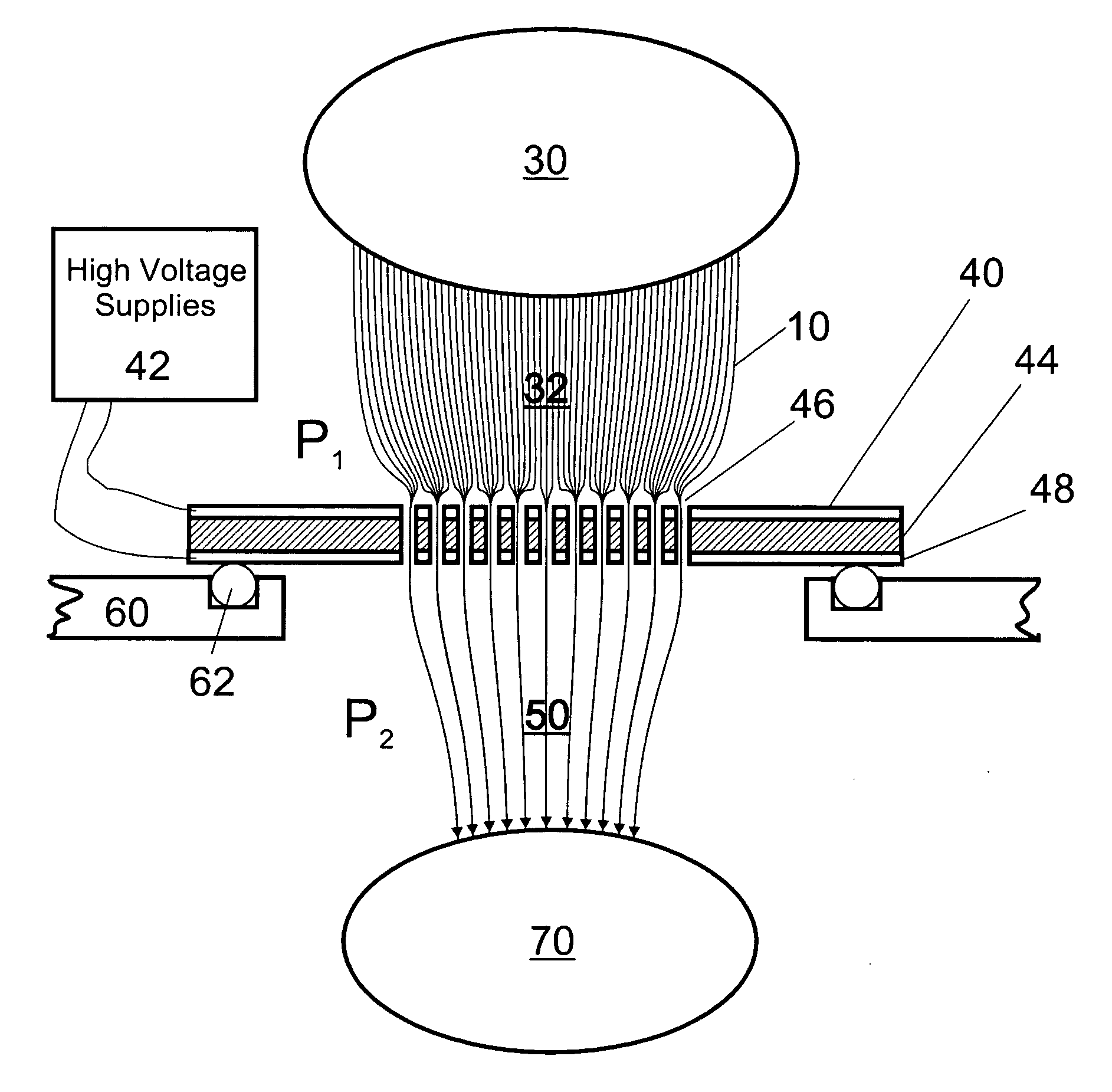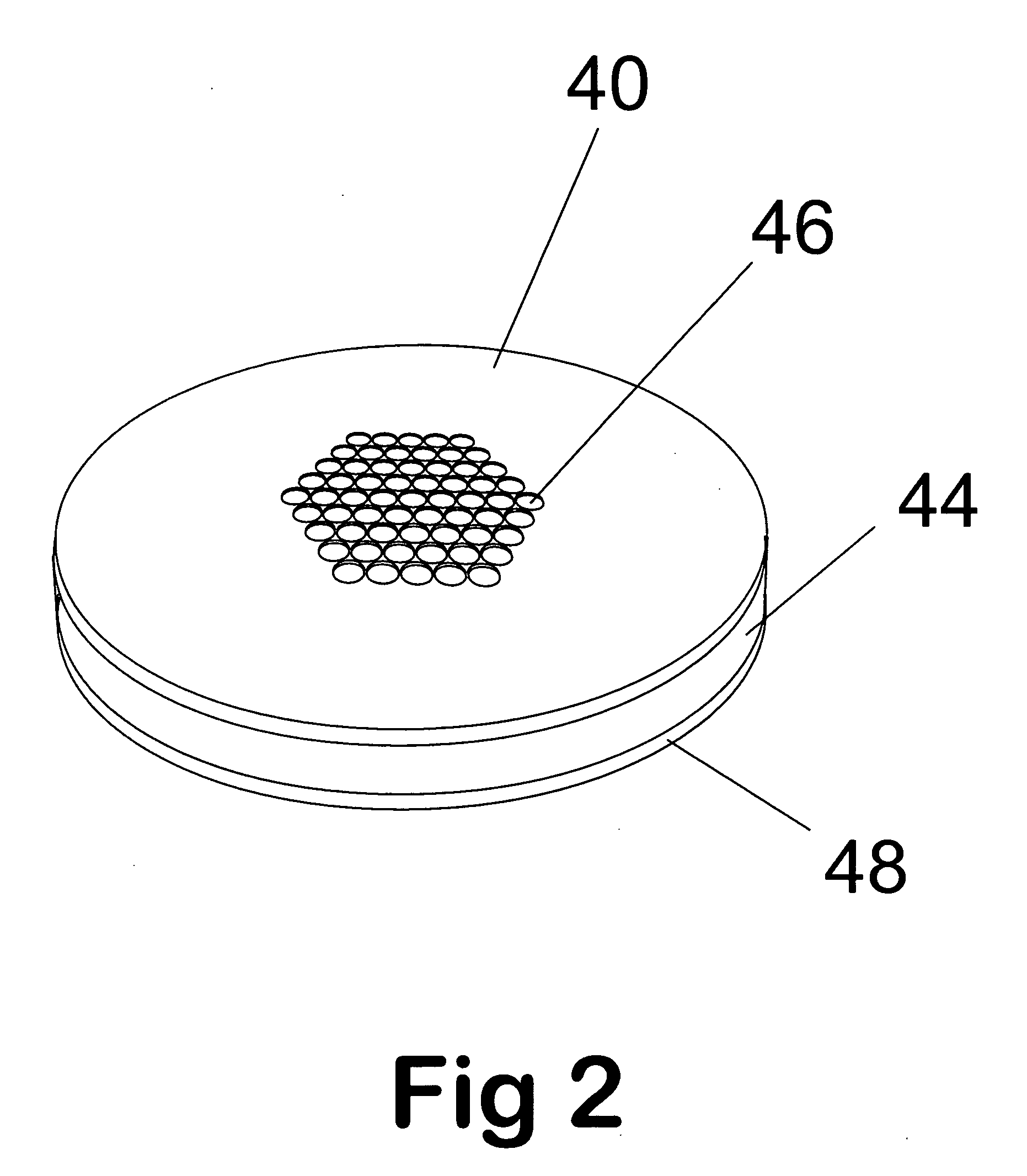Ion enrichment aperture arrays
a technology of aperture arrays and apertures, which is applied in the direction of electron/ion optical arrangements, particle separator tube details, separation processes, etc., can solve the problems of low electrostatic field penetration into the lower pressure region relative to larger apertures with higher conductance, and more sensitive response of ion analyzers or higher currents, so as to achieve high transmission, maximum ions transmission, and low dispersion of ions
- Summary
- Abstract
- Description
- Claims
- Application Information
AI Technical Summary
Benefits of technology
Problems solved by technology
Method used
Image
Examples
Embodiment Construction
. 1 AND 2--PREFERRED EMBODIMENT
[0066] A preferred embodiment of the ion selective multi-aperture laminate of the present invention is illustrated in FIGS. 1 and 2. The multi-aperture laminate has a thin first insulated laminate 44 of uniform cross section consisting of an insulating material. A layer of metal 40 and 48 is laminated on both sides of the laminate 44. In the preferred embodiment, 44 is an insulating material, such as glass or ceramic. However, it can consist of any other material that can isolate electrically the two metal laminates 40 and 48 from each other, such as nylon, polyimide, Teflon, poly ether ether ketone (PEEK), etc.
[0067] The multi-aperture lens is populated with many holes or apertures 46 that traverse the lens leading from higher pressure ion collection region 32 to lower pressure region 50. The inlets of the apertures 46 are downstream of the ion source region 30 and ion collection region 32. The inlets accept ions from the region 32. The ions are trans...
PUM
 Login to View More
Login to View More Abstract
Description
Claims
Application Information
 Login to View More
Login to View More - R&D
- Intellectual Property
- Life Sciences
- Materials
- Tech Scout
- Unparalleled Data Quality
- Higher Quality Content
- 60% Fewer Hallucinations
Browse by: Latest US Patents, China's latest patents, Technical Efficacy Thesaurus, Application Domain, Technology Topic, Popular Technical Reports.
© 2025 PatSnap. All rights reserved.Legal|Privacy policy|Modern Slavery Act Transparency Statement|Sitemap|About US| Contact US: help@patsnap.com



